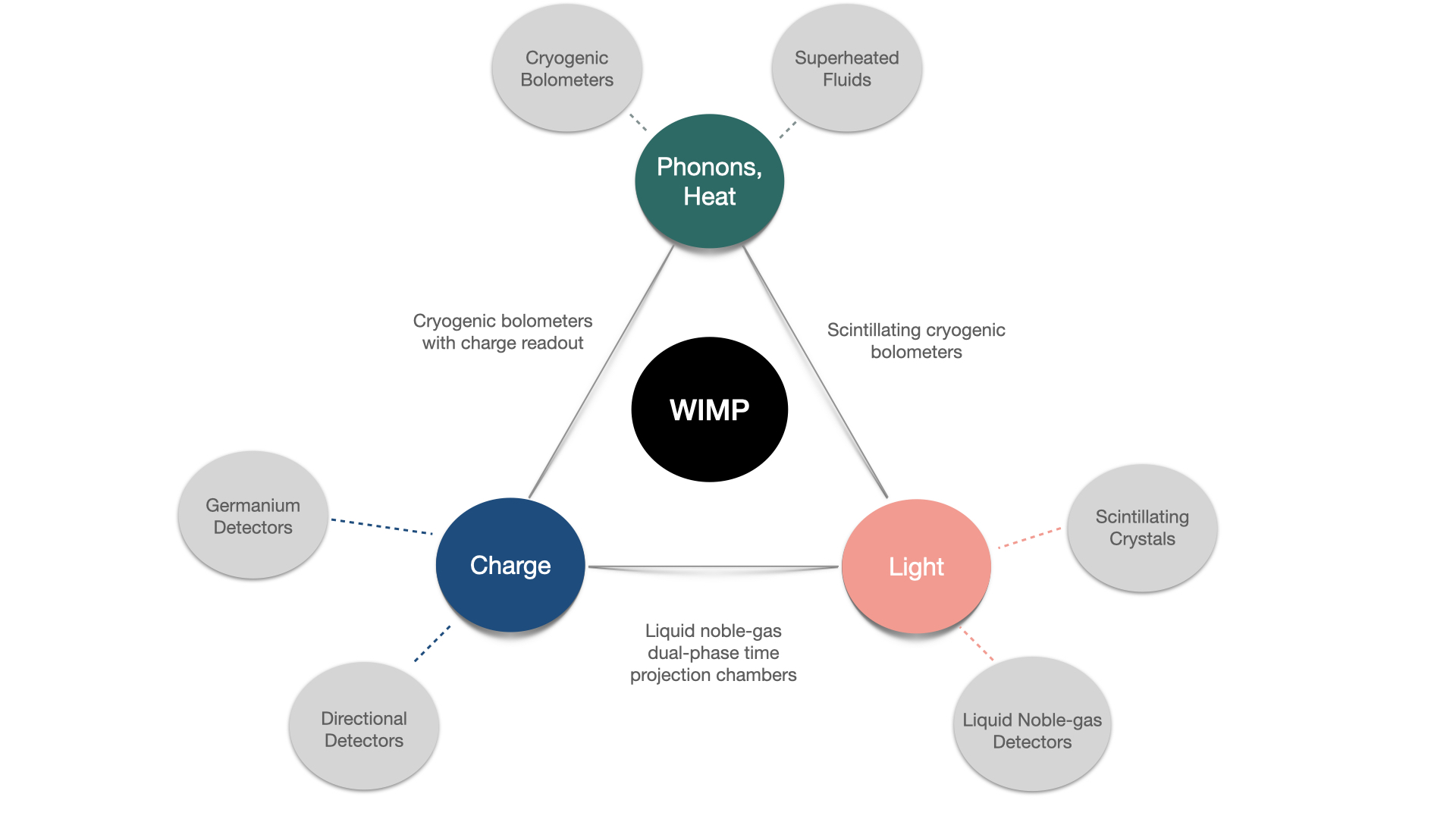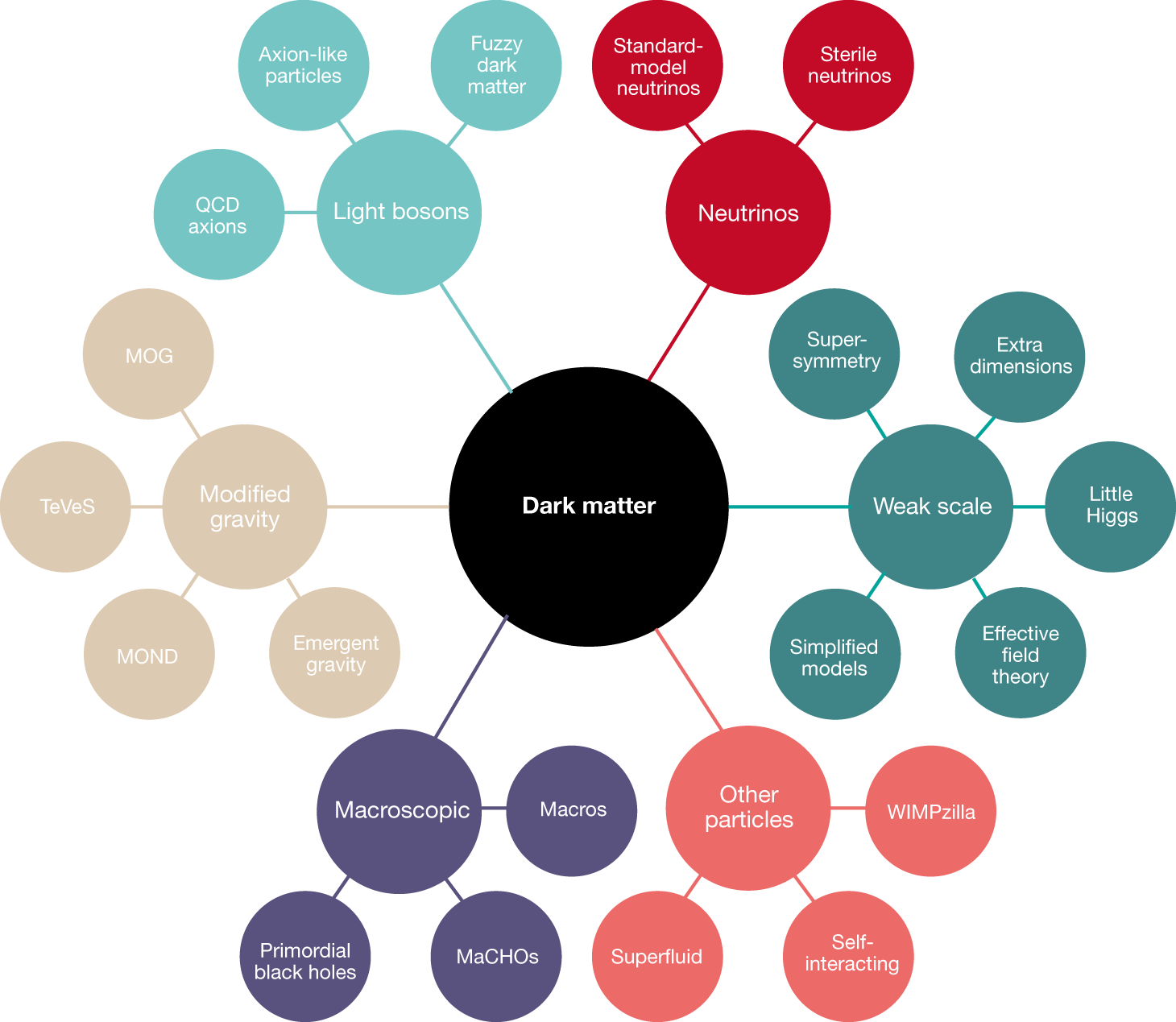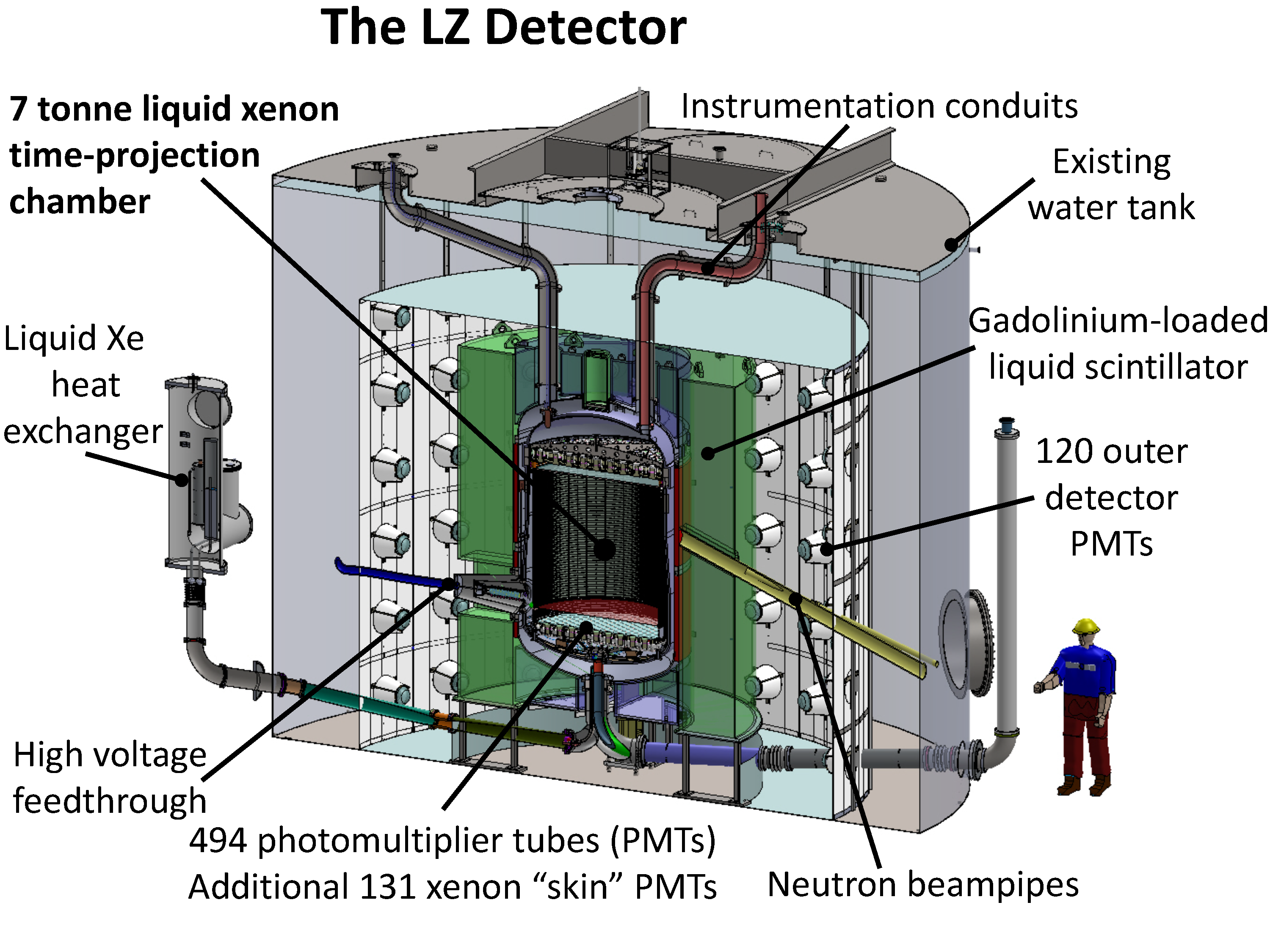What is Dark Matter?
Today, the scientific community generally accepts that 95% of the universe is made up of stuff that we’ve never seen before and do not understand; the chart at the right shows the composition of our universe as measured by the NASA/WMAP satellite (the subject of a future series of posts). We think about a quarter of this unknown density is in the form of dark matter. Although the phrase “dark matter” sounds sci-fi and romantic, it’s actually a simple description of what we think it is – matter that does not interact in the usual way with light, unlike the ordinary matter that makes up the Earth, people, the Sun, and everything else that we can see in the sky at night (the remaining 5%).

The truth is, even though dark matter is 85% of the total matter in the universe, we don’t know what it is because we’ve never seen it directly. That’s one of the reasons we’re looking for it. There are a number of theories for what dark matter might be, but for now I’ll just talk about one of the most popular, the Weakly Interacting Massive Particle (WIMP) (again, a cute name that is quite a literal description of a particle that has mass and interacts weakly). There are four forces in nature. The first is gravity, by which mass attracts other mass. The second is electromagnetism between charges, such that like charges repel and opposite charges attract (electromagnetism is also the interaction between matter and light). The third force is the “strong” force, which holds protons and neutrons together. The final force, and the one of interest here, is the “weak” force, which is involved in nuclear reactions. The weak force is weak mainly because its range is very small. You have to be really, really close to something to interact weakly. For example, there is a very light particle called the neutrino that only interacts weakly (neutrinos are too light to constitute dark matter). Neutrinos are produced in nuclear reactions, including nuclear reactors. As the Sun is basically a giant nuclear reactor, it emits neutrinos all the time - 60 billion solar neutrinos go through each one of our fingernails every second, but they just don’t hit anything; basically, because neutrinos only interact weakly, we are transparent to them. A heavy particle that interacts weakly, or a WIMP, is exactly the kind of thing that could be the dark matter - we simply wouldn’t have observed it before because the weak interaction is so rare.


For more information: A new era in the search for dark matter
WIMP Search: The LUX-ZEPLIN (LZ) Experiment
The LUX-ZEPLIN (LZ) experiment utilizes 7 tonnes of active liquid xenon to search for xenon nuclei that recoil in response to collisions caused by an impinging flux of dark matter particles known as WIMPs (Weakly Interacting Massive Particles). The experiment will be located nearly 1 mile underground in the Sanford Underground Research Facility (SURF) in Lead, South Dakota. The active liquid xenon is configured in a cylinder 1.5 meters in diameter and height, with an applied electric field to form a TPC (Time Projection Chamber). A recoiling xenon nucleus causes a prompt flash of scintillation light, followed by delayed flash of electroluminescence. The light signals are detected by 494 photomultiplier tubes, which are deployed above and below the liquid xenon. The central liquid xenon volume is surrounded by a thin, instrumented region of liquid xenon, an outer detector of gadolinium-loaded liquid scintillator, and a layer of ultrapure water, to identify and reduce false signals.


Scintillating Bubble Chamber (SBC) for Detecting Dark Matter
The Scintillating Bubble Chamber (SBC) builds on the world-leading use of bubble chambers for detecting dark matter. Interactions with dark matter are detected by looking for the energy deposited when those particles collide with a nucleus in the detector. This energy deposit causes the superheated liquid (in a state above its normal boiling point) to undergo a phase transition – to create a bubble. This gas bubble is detected by watching the active area with cameras, and listening with acoustic sensors. Once a bubble is detected, the chamber is compressed to put the gas back into the liquid state to be ready for the next interaction. One of the advantages of the bubble chamber is the dramatically reduced sensitivity to background events which can cause false signals in the detector. This reduction is only applicable for larger masses of dark matter particles, and diminishes for lighter dark matter particles. SBC strives to extend this background rejection through the use of a different target material. This increases the complexity of the detector, requiring it to be kept very cold (-186°C) but the use of argon makes the possibility of detecting lighter particles possible. The light generated by the background events will be detected by new silicon photomultipliers which will allow for even greater particle discrimination.
HydroX
HydroX, an upgrade of the LUX-ZEPLIN (LZ) dark matter detector that would add hydrogen to LZ after the initial dark matter run is complete, opening up sensitivity to O(100 MeV)-scale dark matter for both spin dependent and spin independent interactions.
Hydrogen is the ideal target for low mass dark matter because it has the lowest A of any nucleus, and because its unpaired proton (or neutron in the case of deuterium) provides unmatched sensitivity to spin dependent couplings in this mass range. This idea is aligned with recent DOE efforts towards detection of lighter dark matter particles. It leverages the technical advances and investment in LZ, particularly the low background construction and radio-clean envi- ronment. By the time H2 is introduced into the LZ instrument, the low background environment, among the best developed in history, will be fully characterized by the main LZ science run.
The UCSB HydroX group has two main goals: 1) Measuring detector properties of H2 doped liquid xenon (LXe), including the signal yields of proton, electron, and xenon recoils; and 2) Understanding the cryogenics of H2 doped LXe, including the solubility of H2 in LXe and the techniques needed to manage a mixture of H2 and Xe in a large scale cryogenic installation like the LZ detector.

